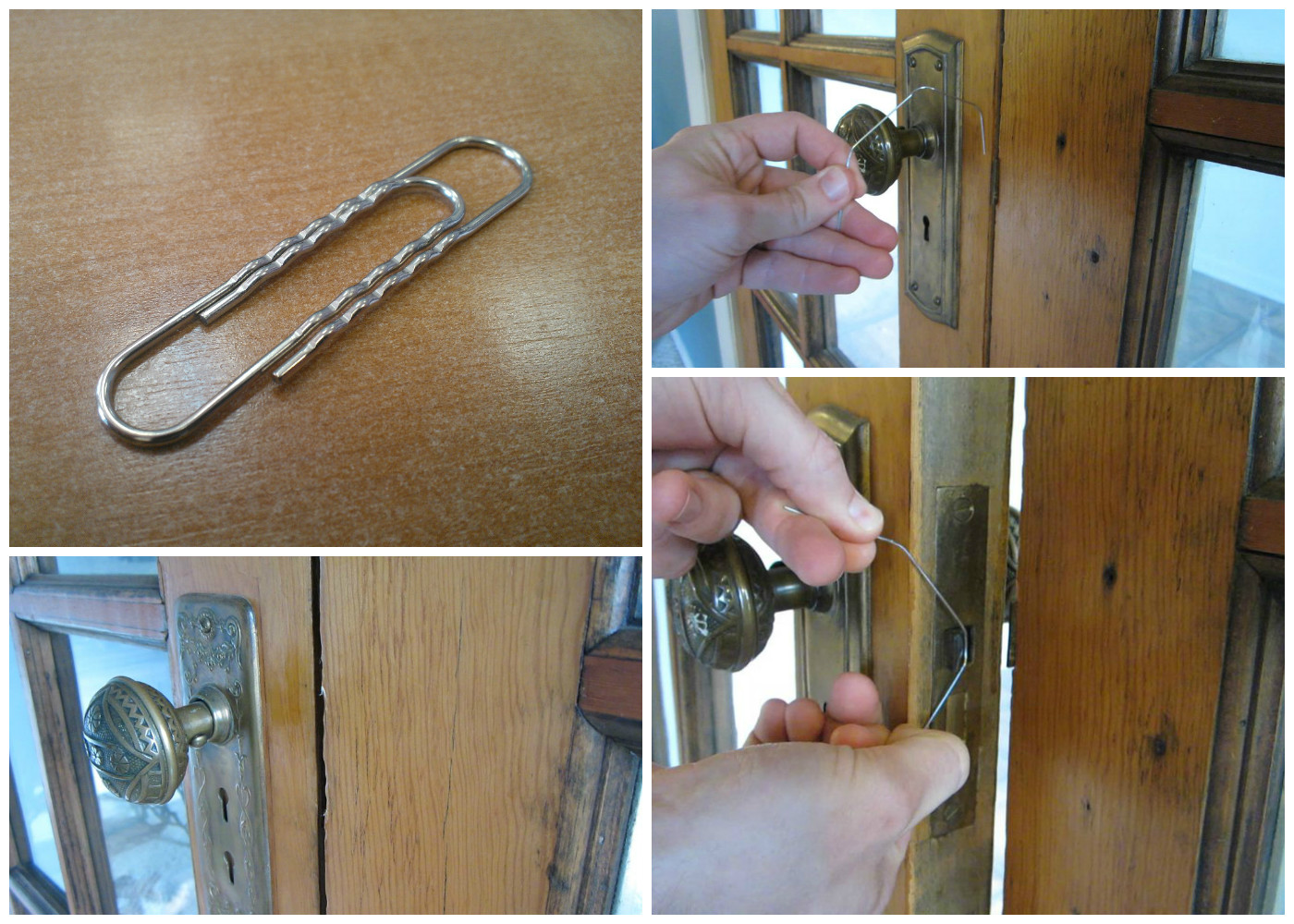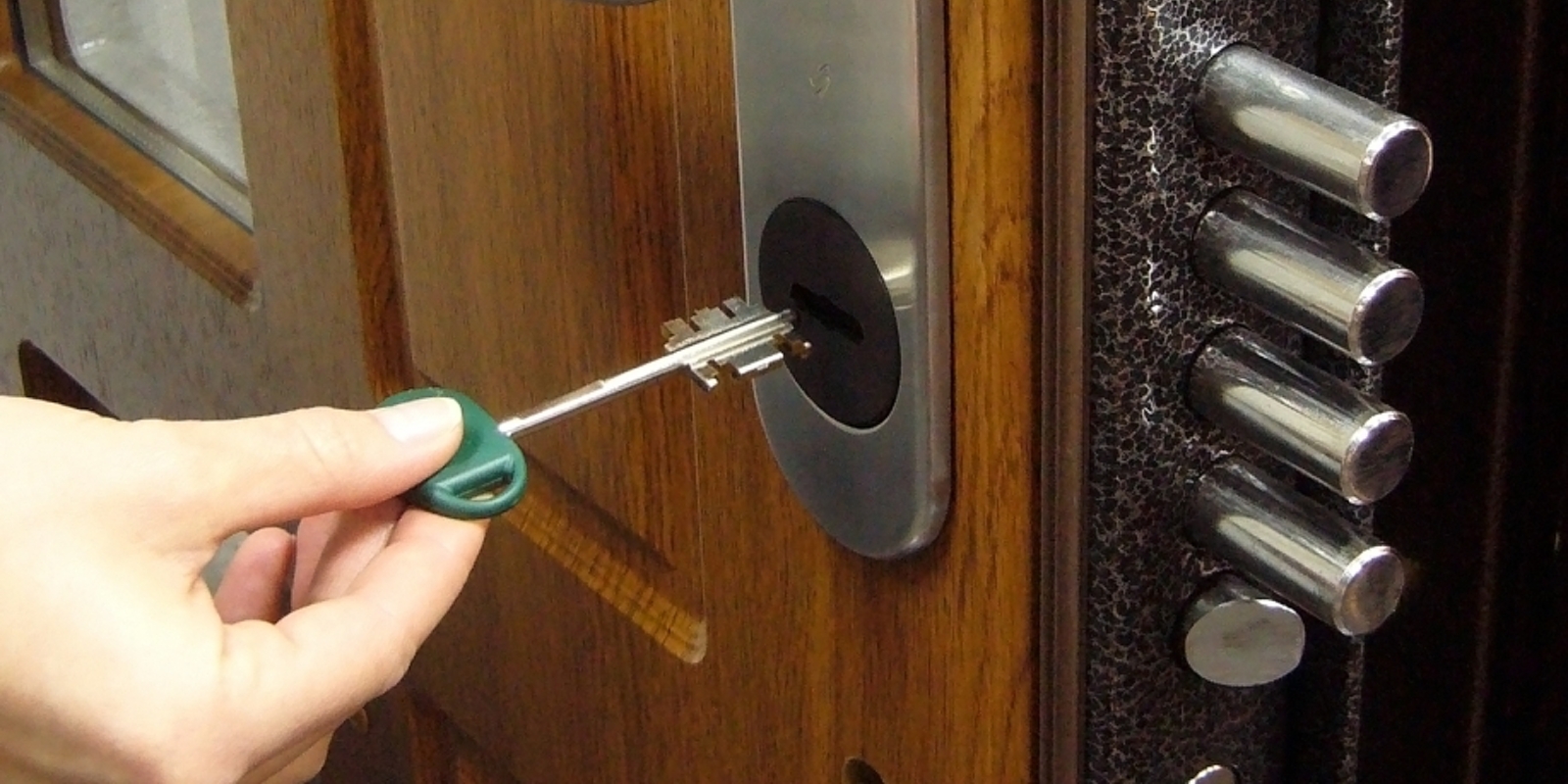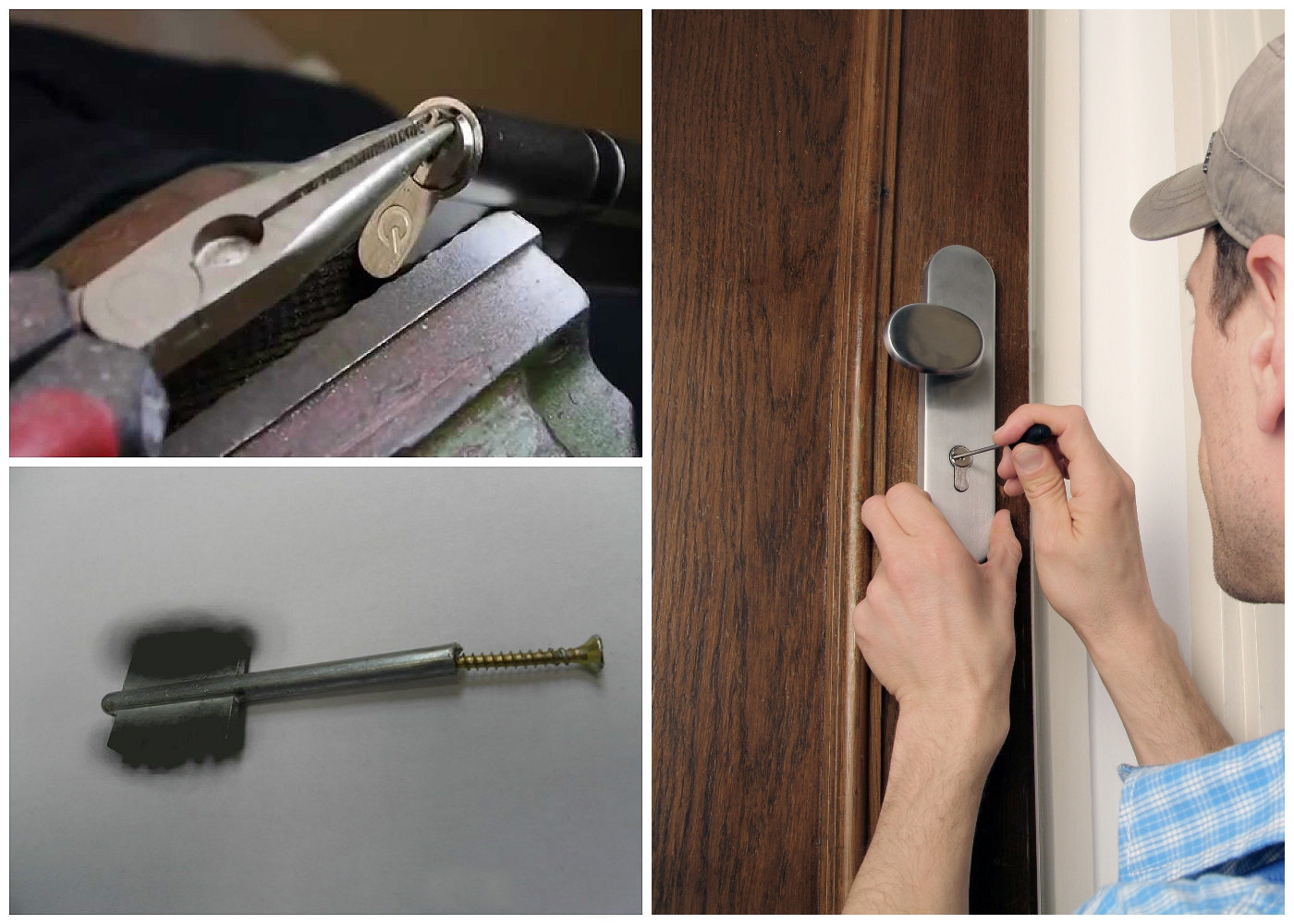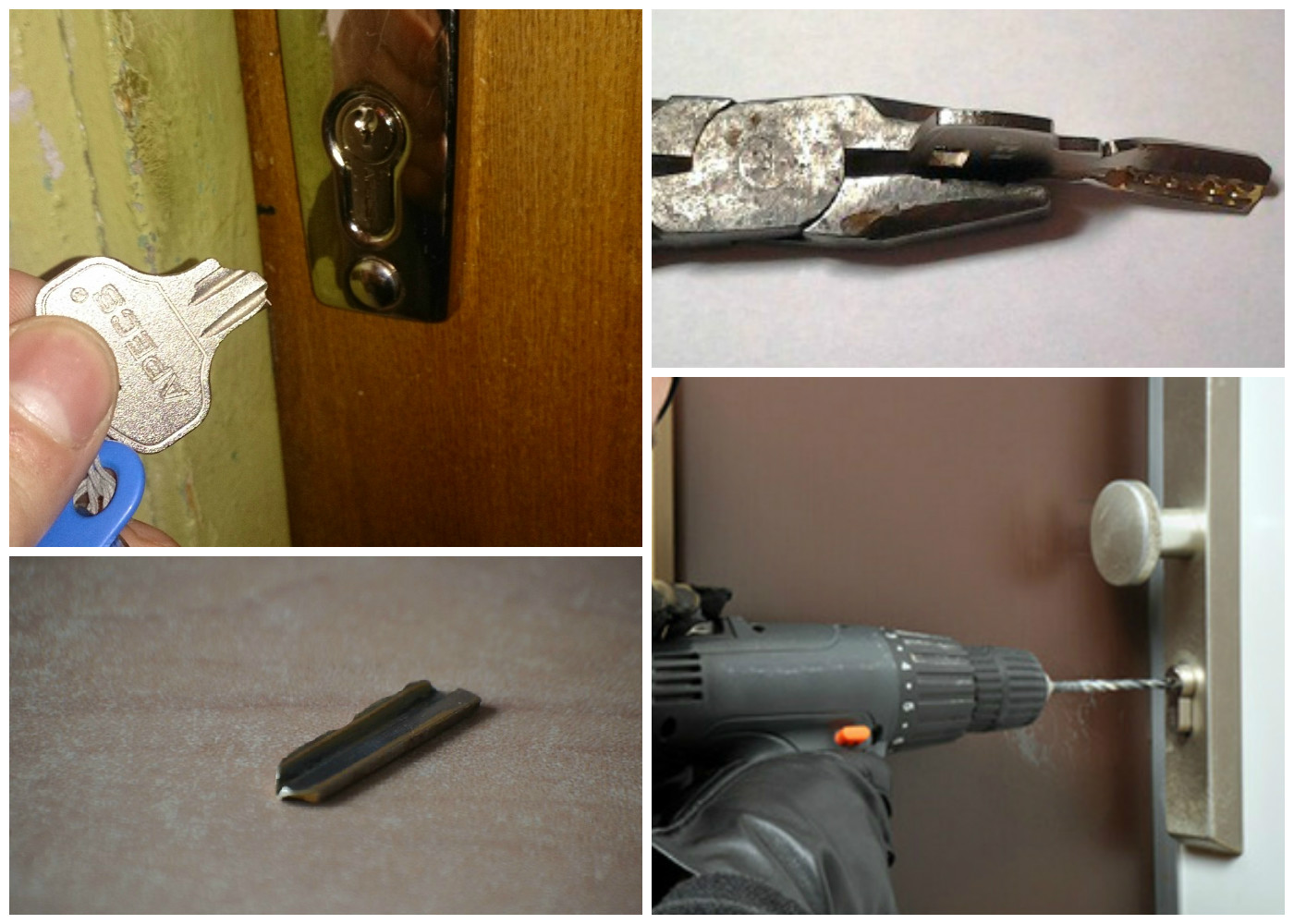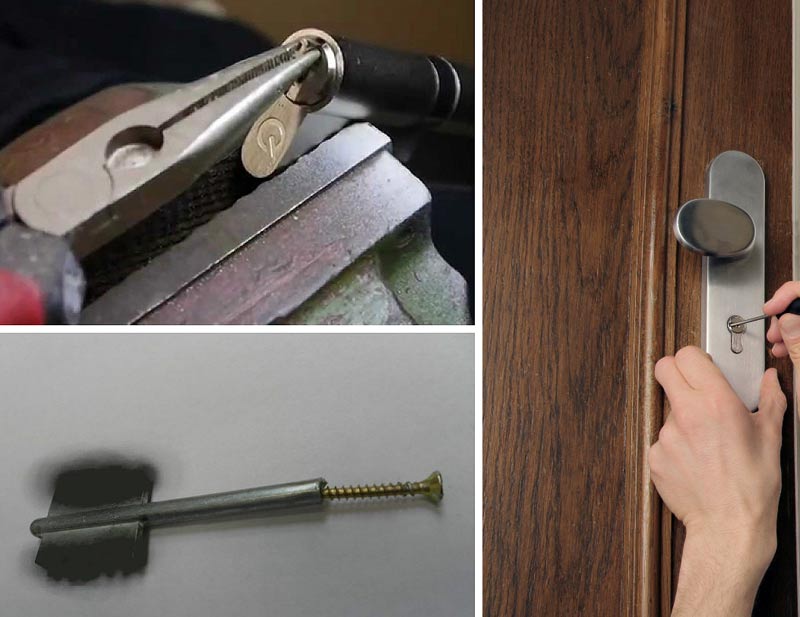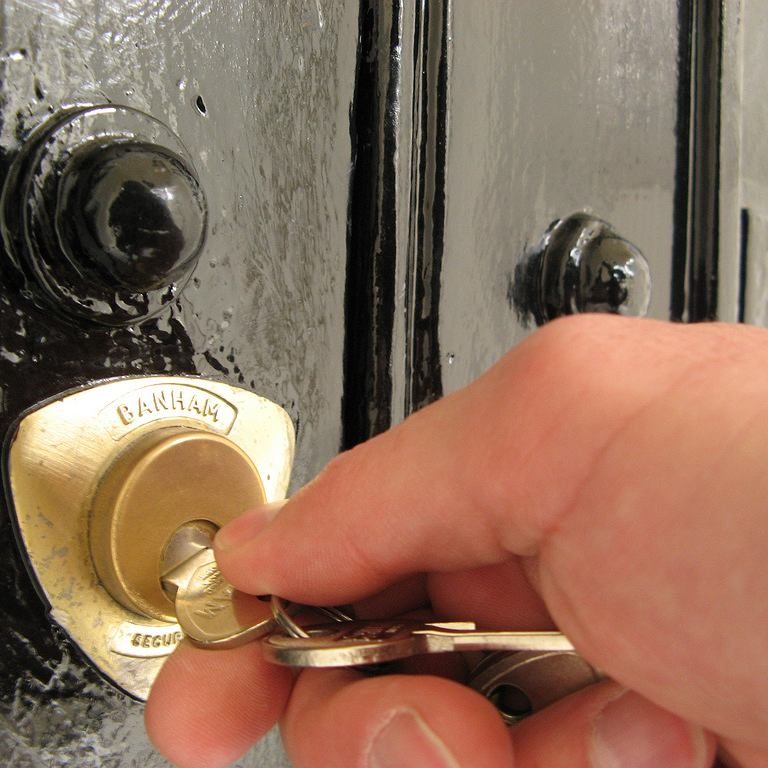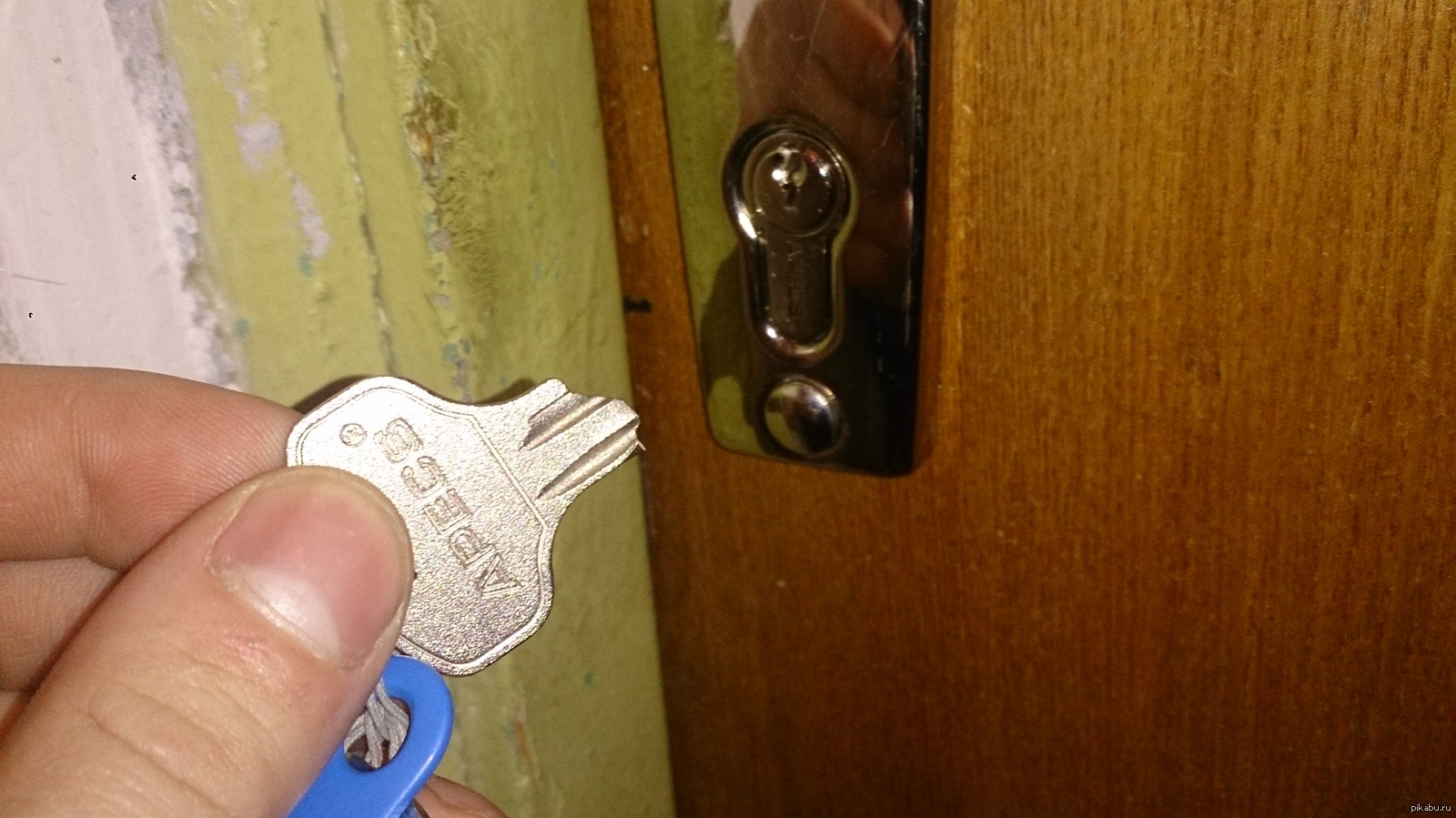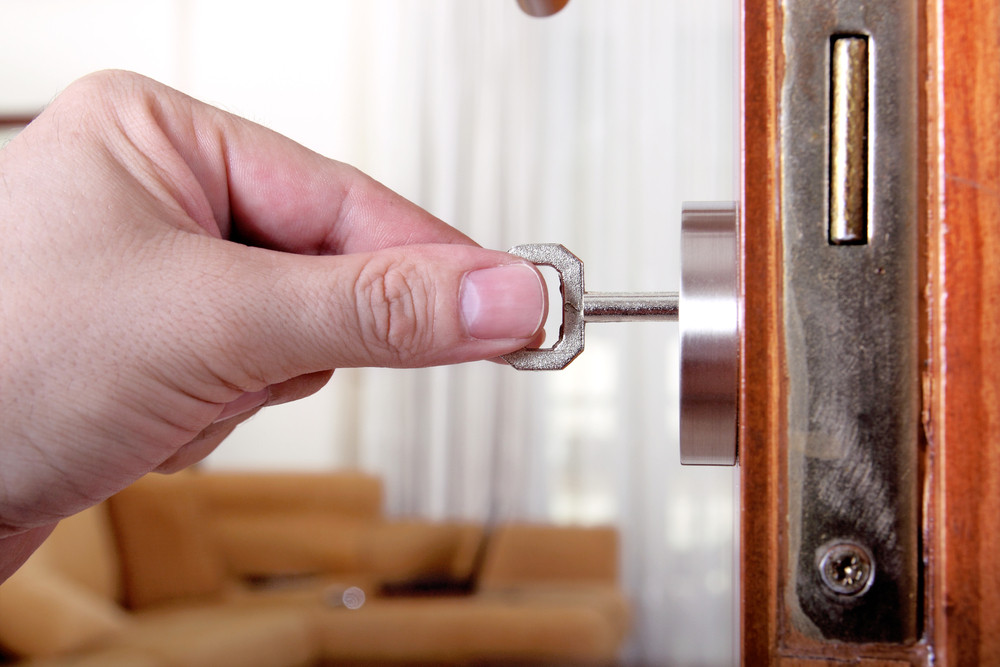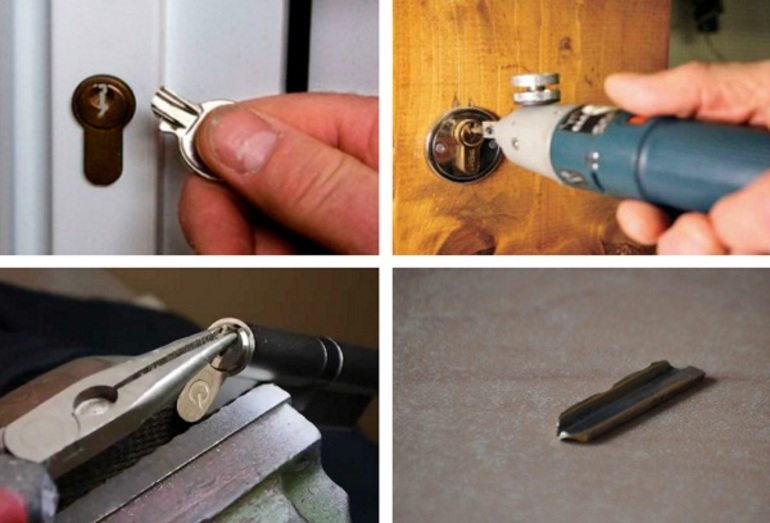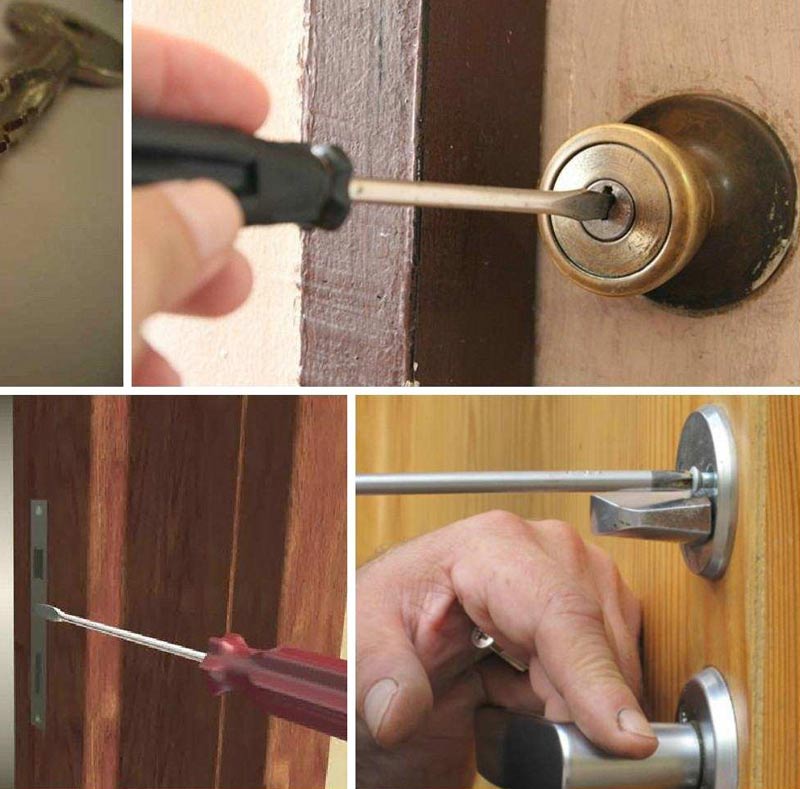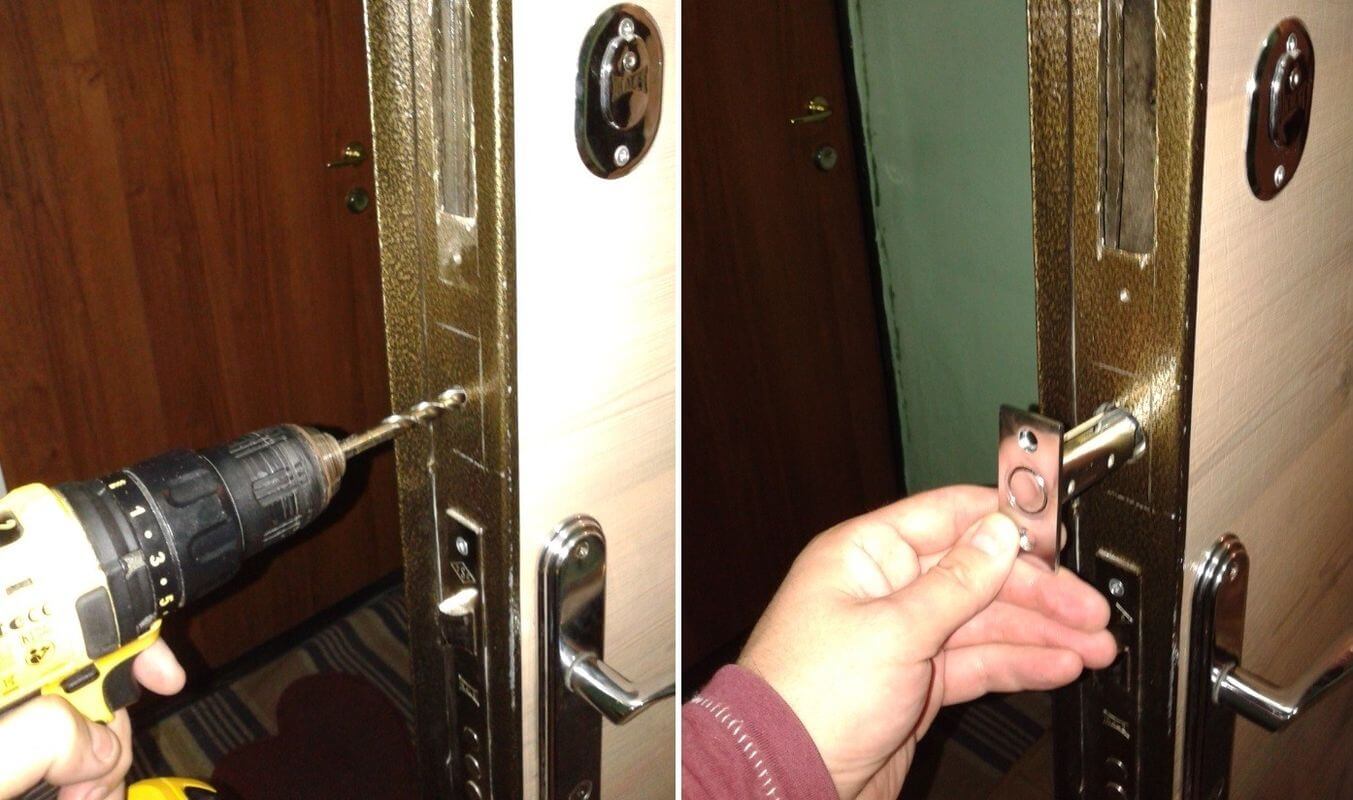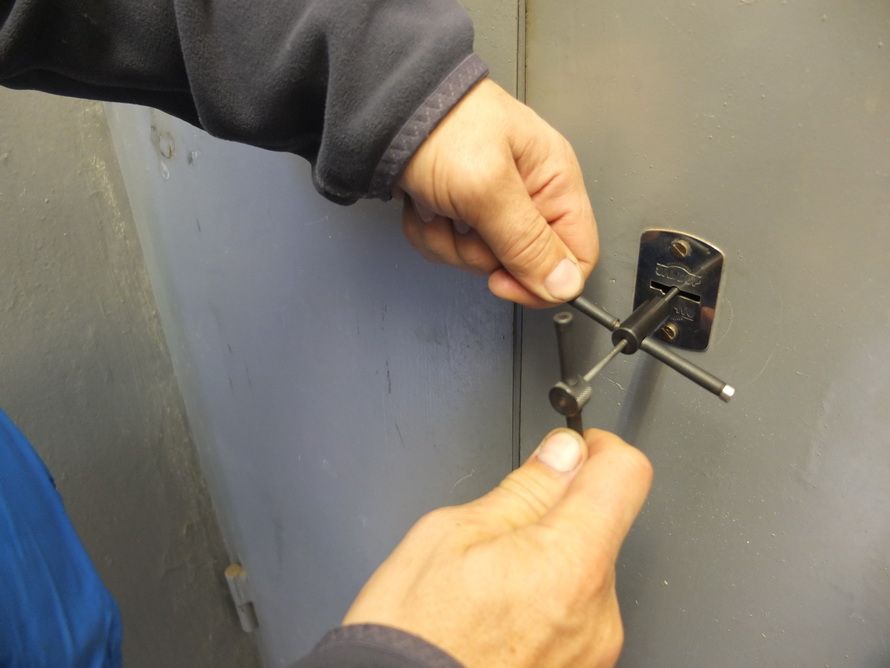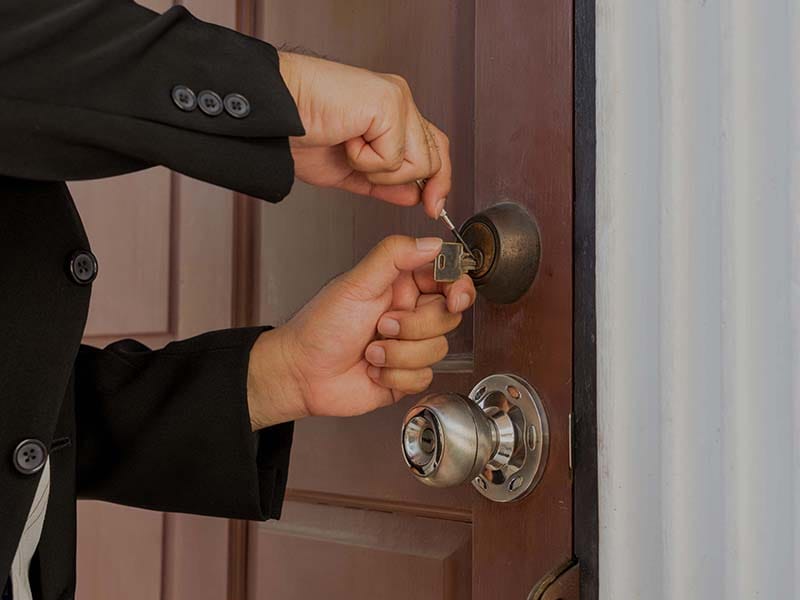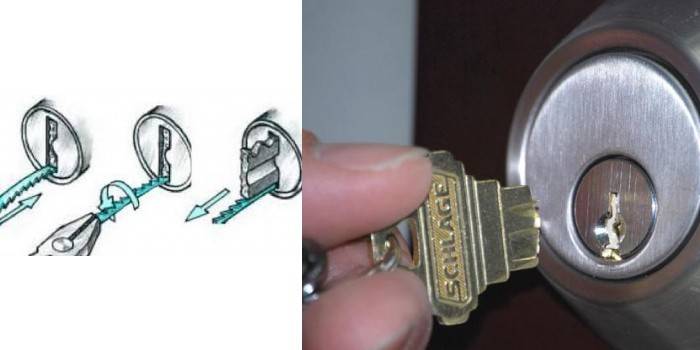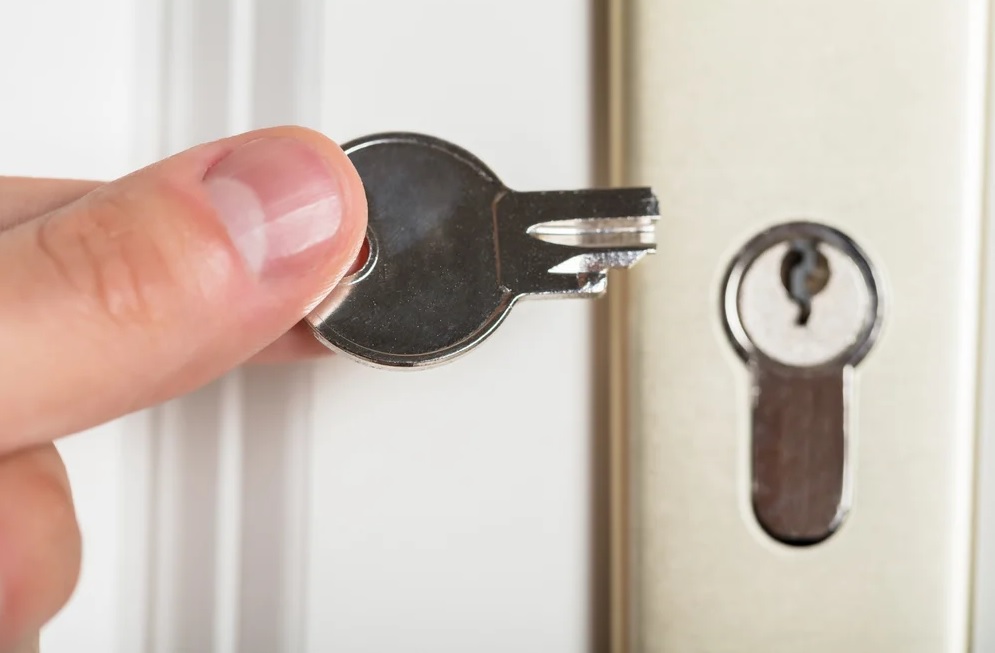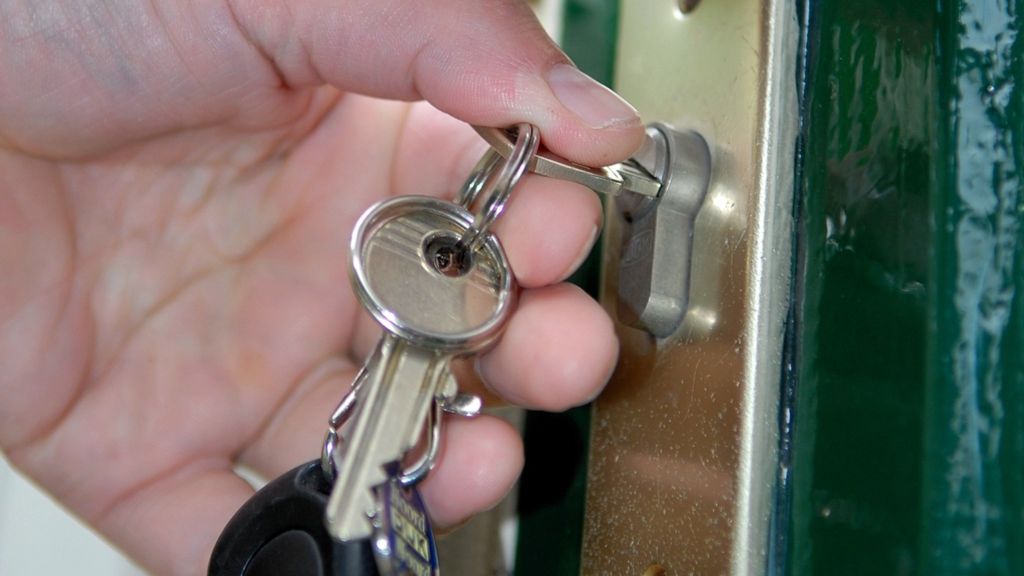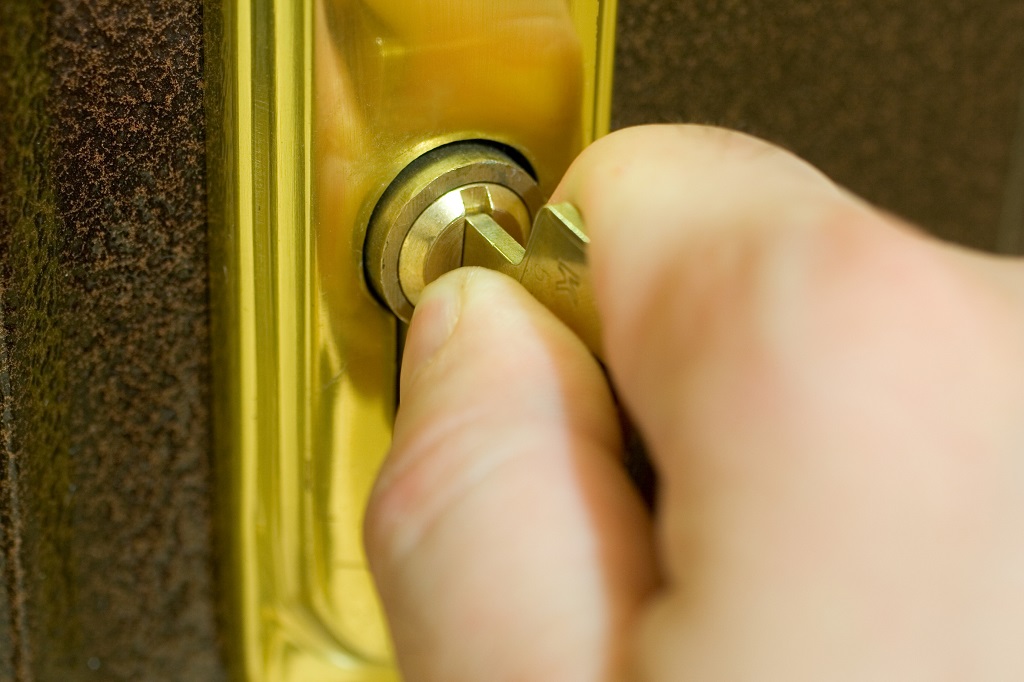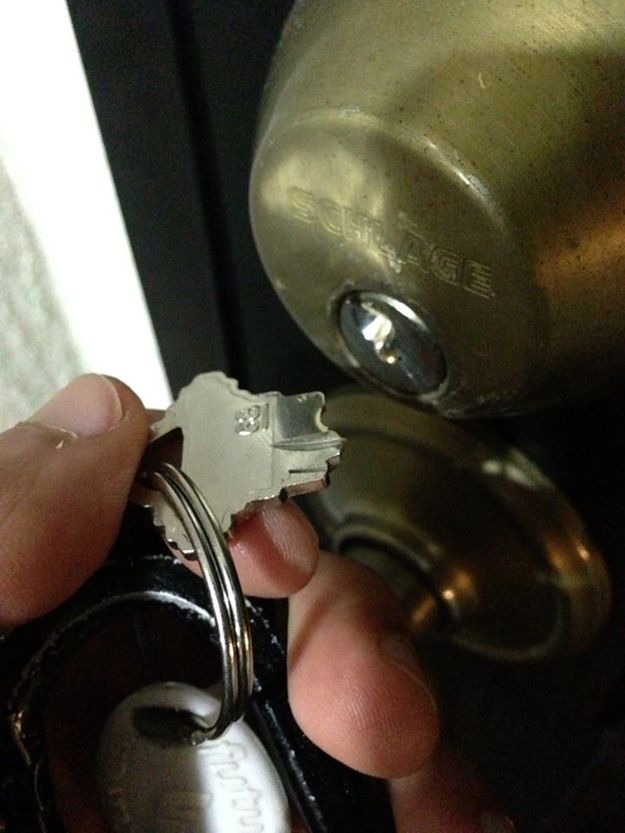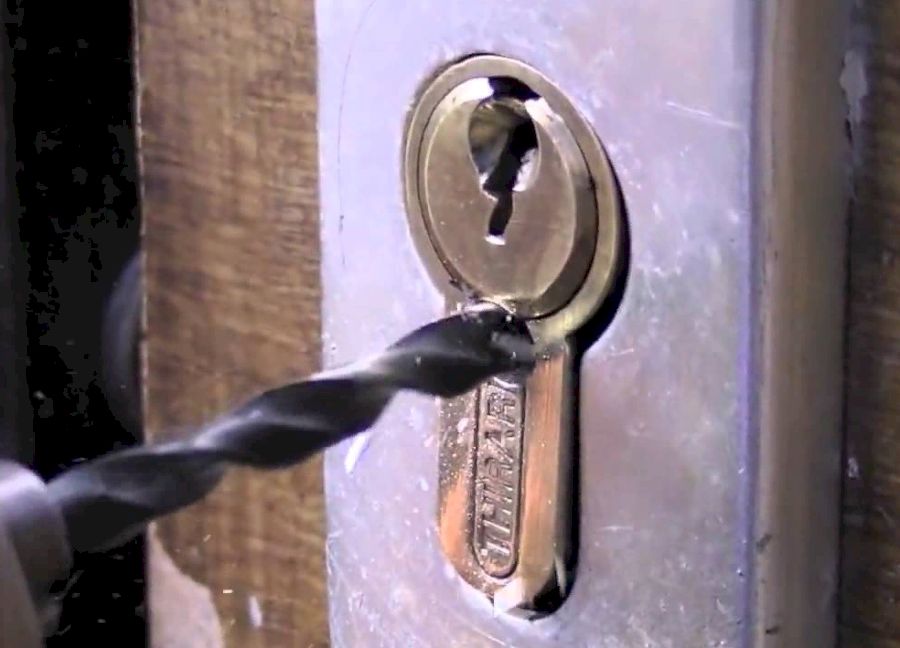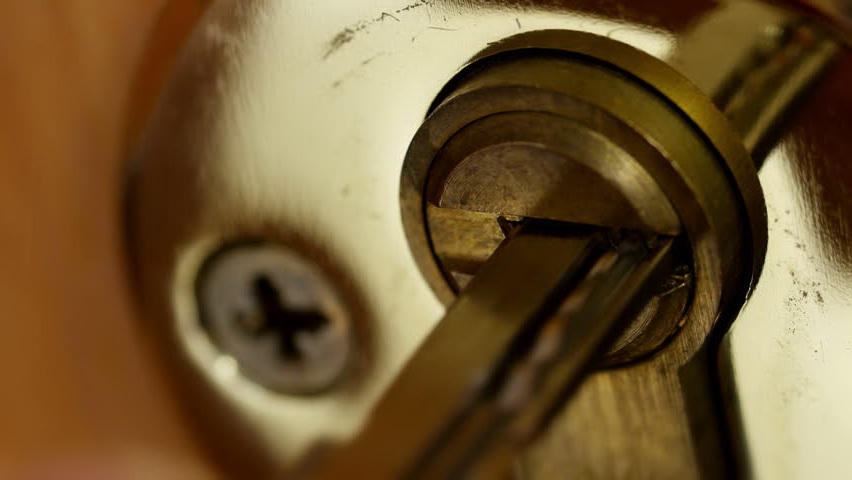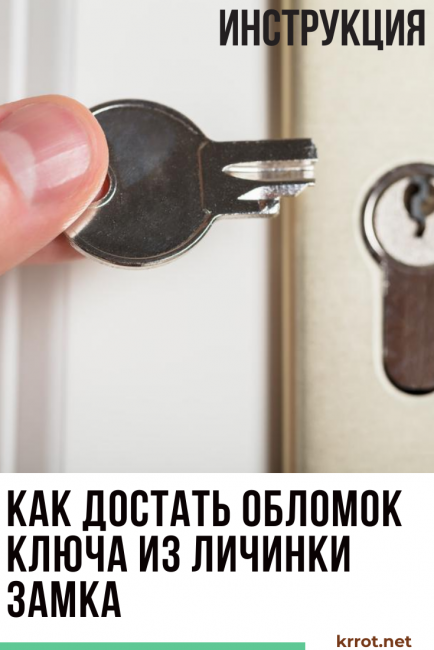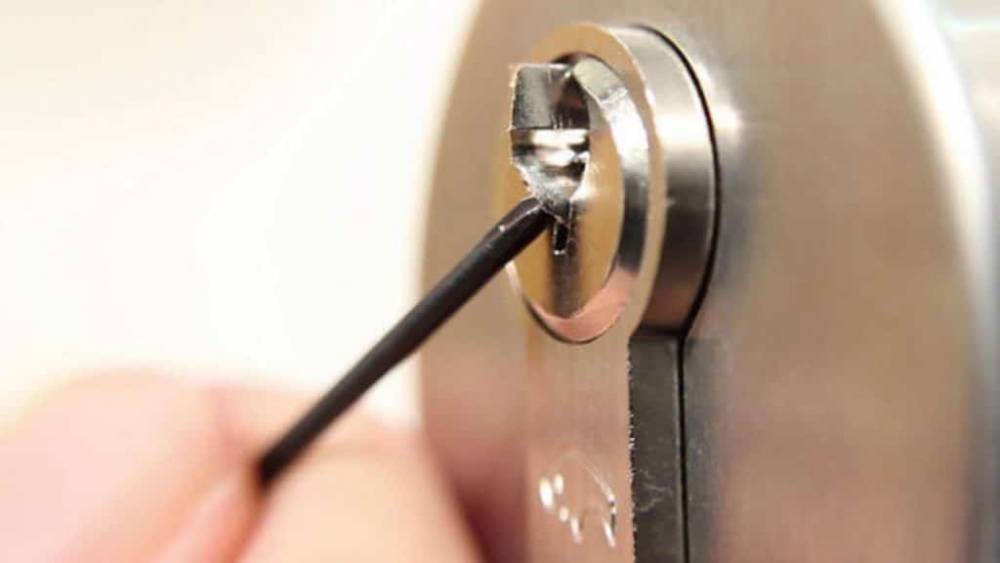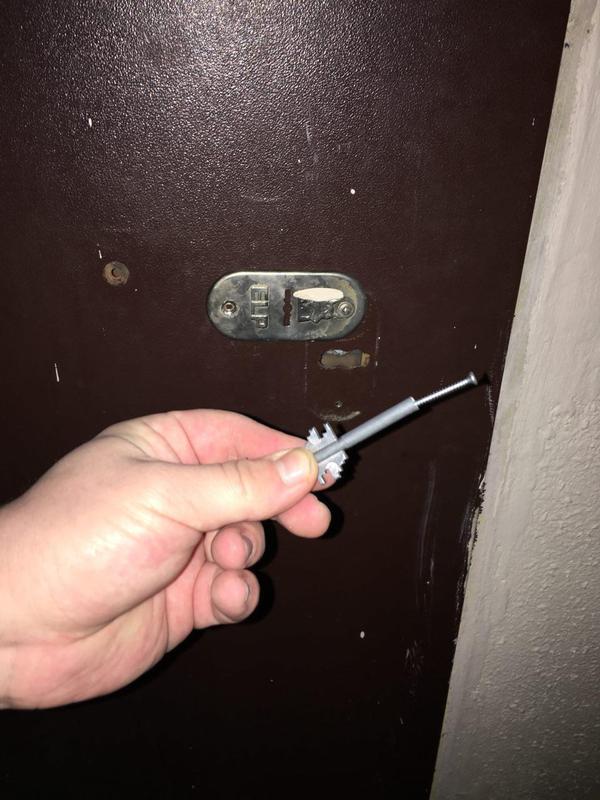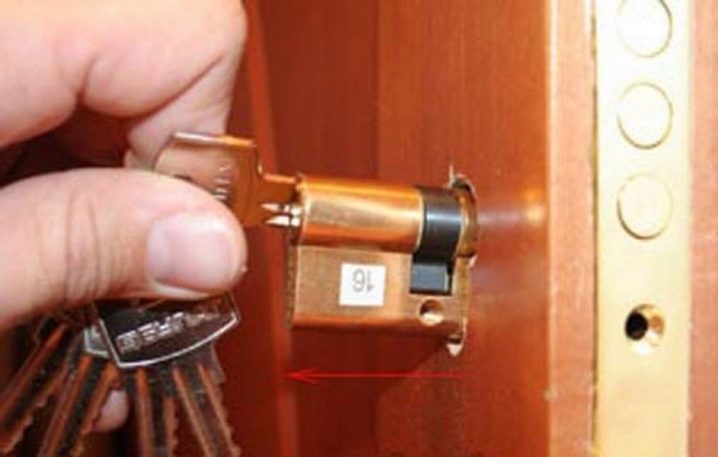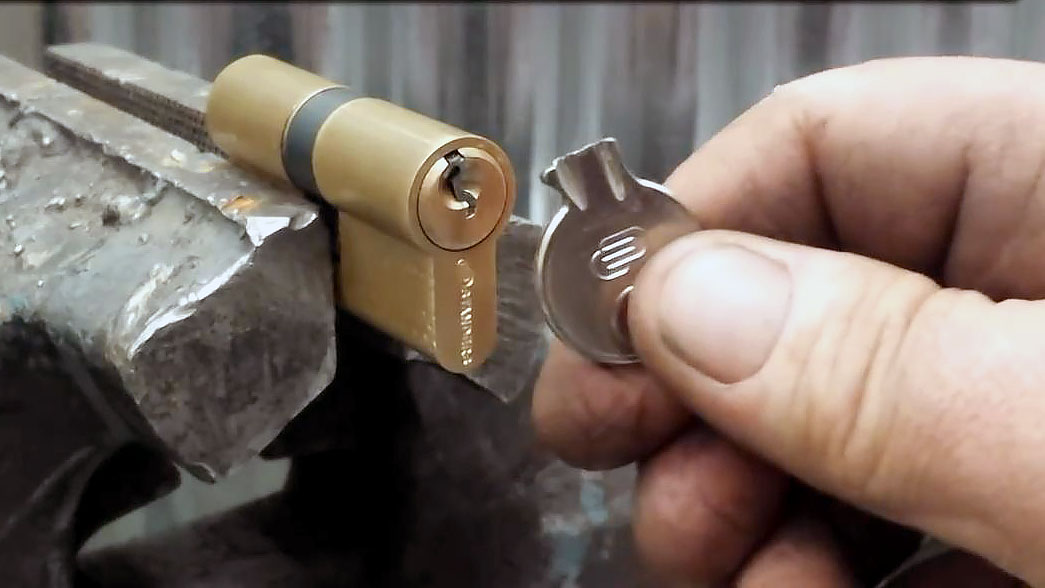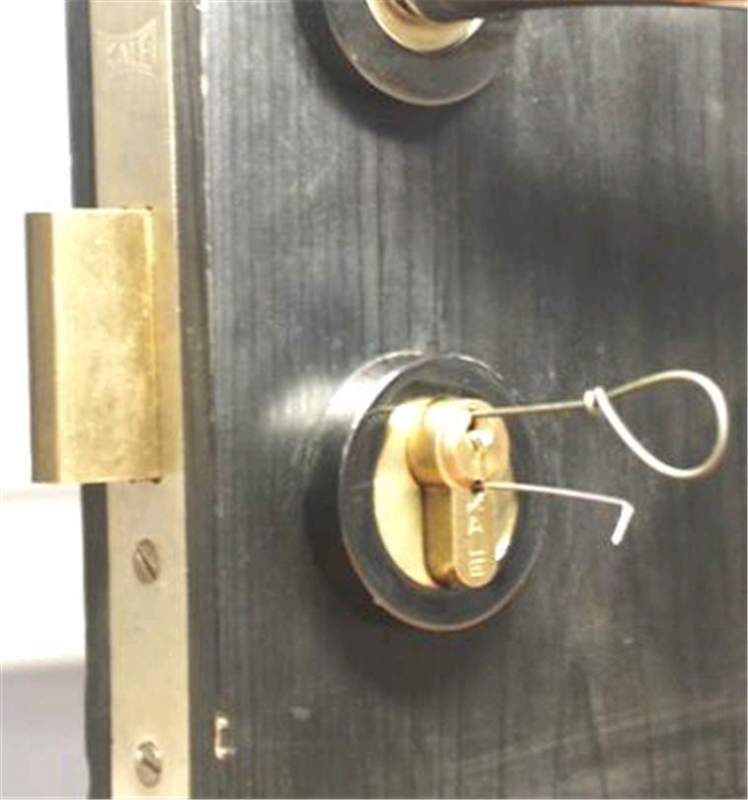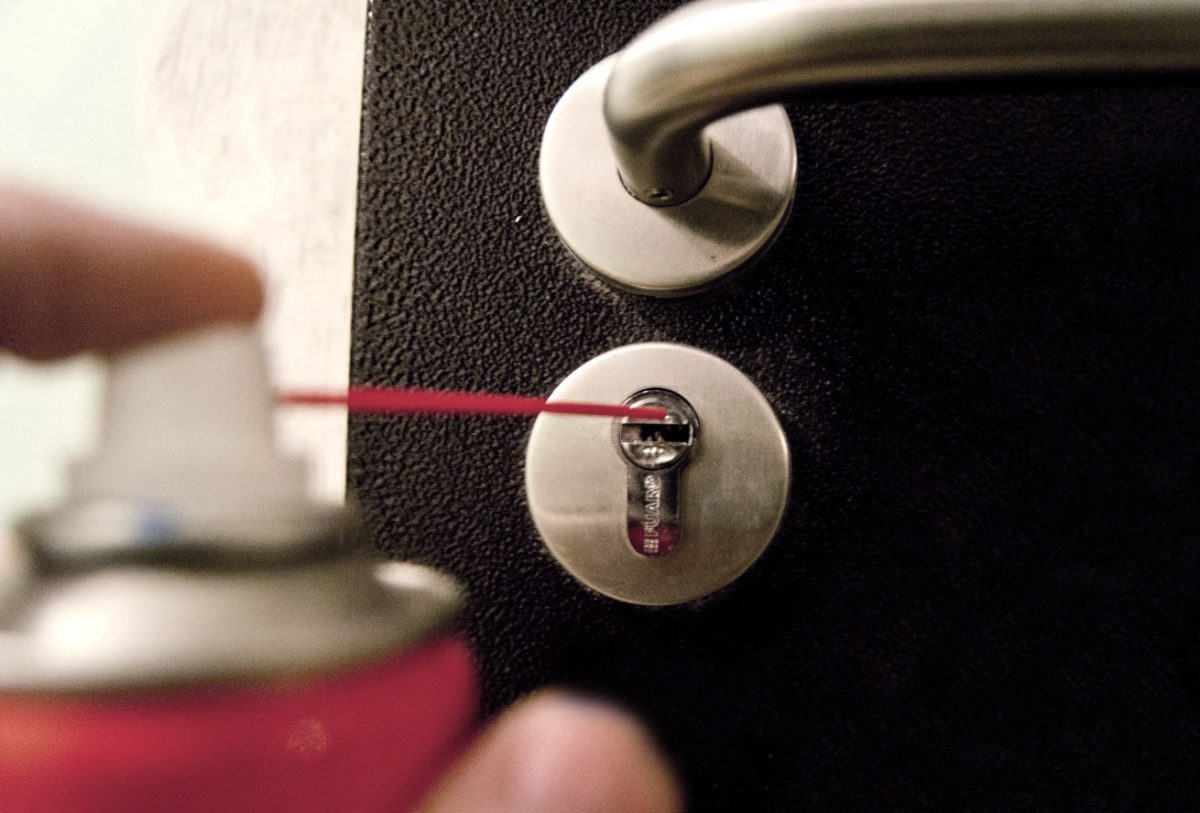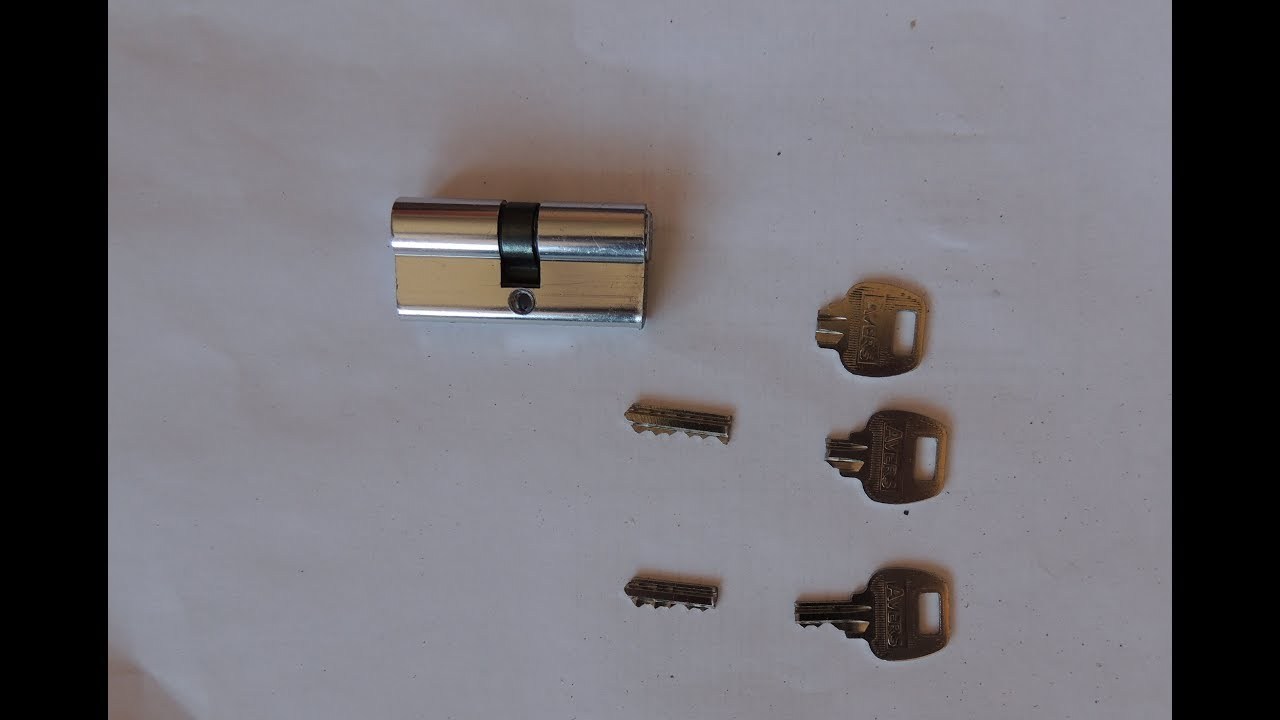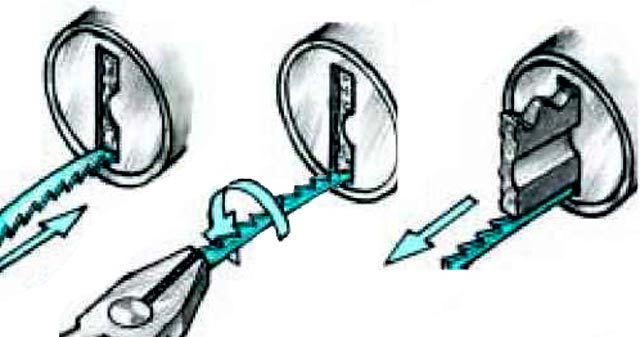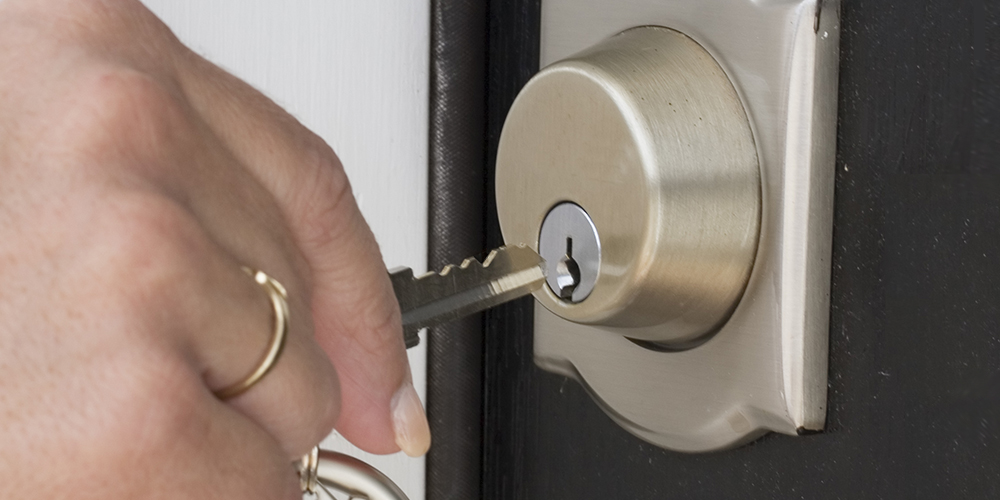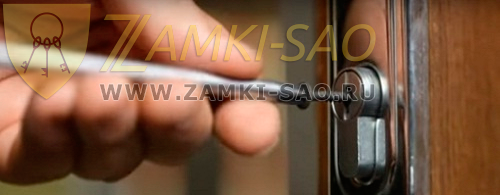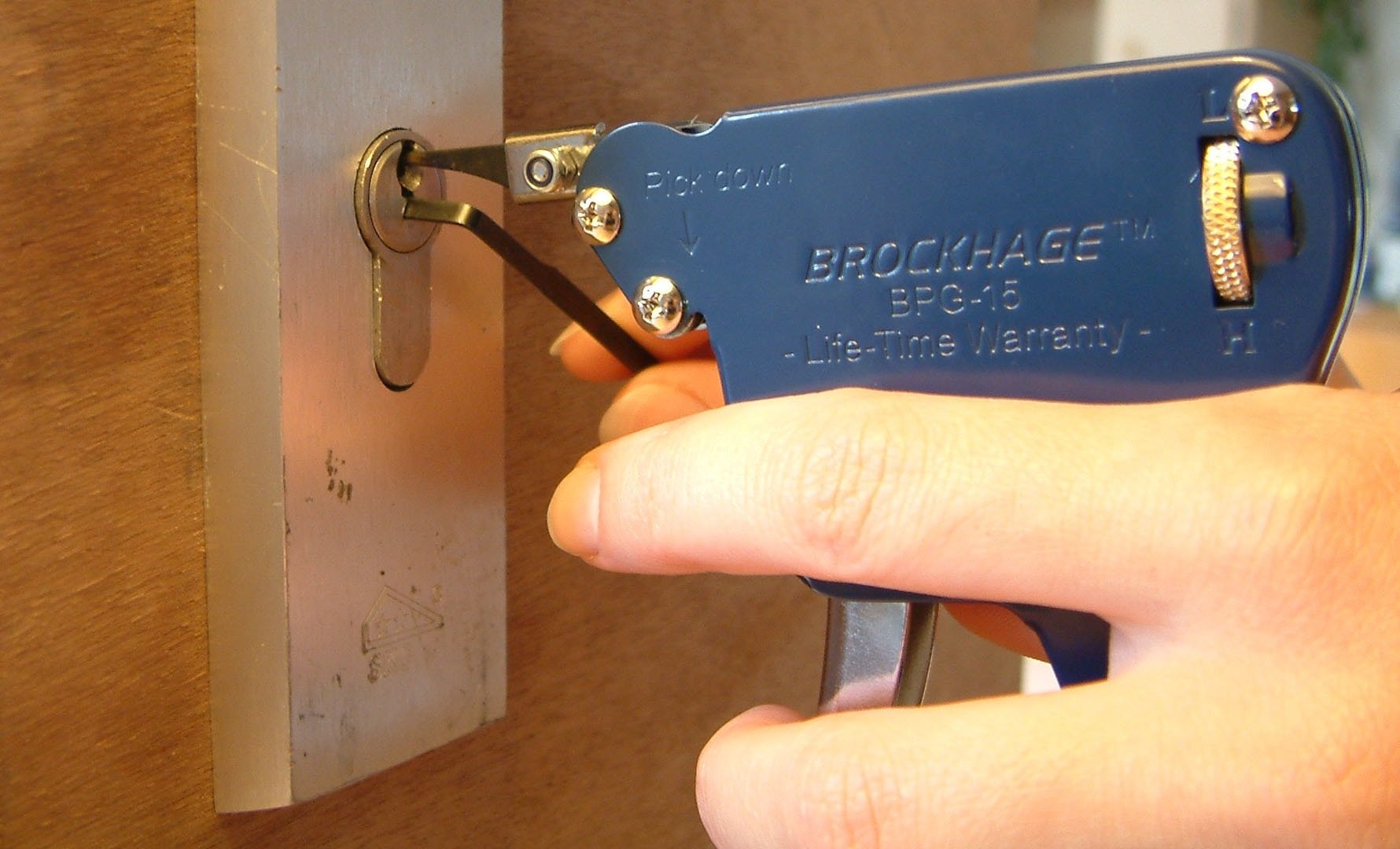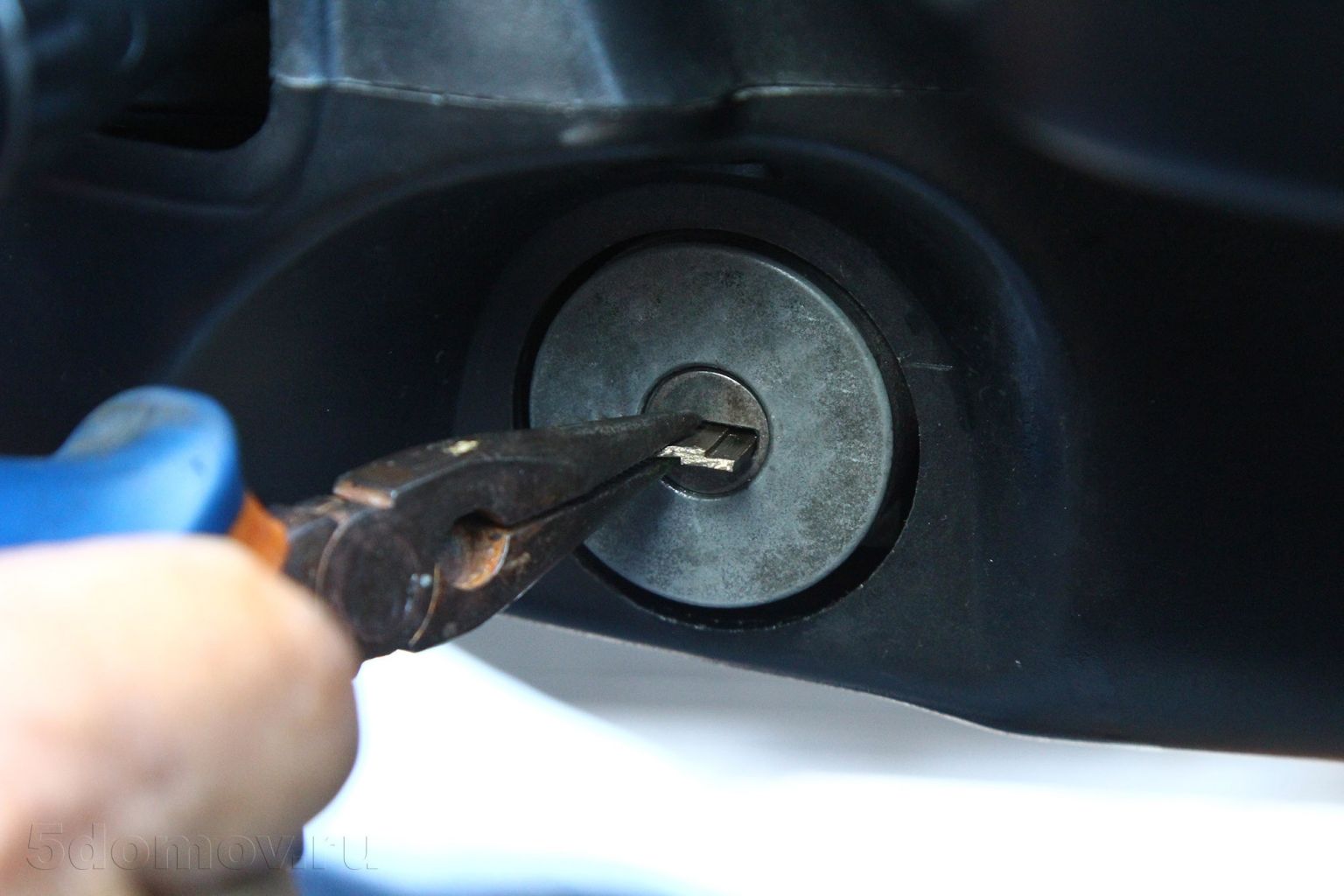Probable causes of malfunction
- Manufacturing defects.
- As a rule, these are the consequences of its illiterate installation, and problems with the lock appear pretty soon.
- Increased wear of parts. By the way, this often happens if you use "not native" keys, but duplicates. Moreover, made according to the sample without removing and disassembling the locking device.
- Clogged keyhole.
- Neglecting the requirements for periodic lubrication of the mechanism.
- Gradual deformation (skewing) of the door block or sash. This is a time when thinking about how to open a jammed lock is a waste of time. Most likely, you will have to either remove the canvas, or cut the loops (depending on their type).
- Defects in the key itself. Many people use it not only for its intended purpose, but also as an improvised screwdriver, bottle openers and the like. Naturally, over time, such a key in the lock turns more and more difficult, and at a certain moment (as a rule, the most inappropriate one) it jams.
- Hacking attempt.
Next, you should evaluate the complexity of the malfunction and your capabilities. For example, if a metal door is jammed, then you obviously cannot do without a special tool. And help from the outside will definitely be needed. If it is wooden and new enough, then it is also inappropriate to solve the problem by knocking out the canvas.
And only after analyzing all the factors, you can make a rational decision on what to do in the case when there is a deformation of the door or a breakdown of the lock.
Methods of opening locks in various situations
Most models of interior doors do not differ in structural strength, knocking out a canvas or breaking a lock with the help of force in case of blocking will not be difficult for an adult. However, in this case, the leaf and the door frame can receive serious damage, which will require expensive repairs or replacement of the entire structure.
If the lock in the door is broken, you should not immediately use physical force - excessive load can only aggravate the problem, permanently disable the lock or damage the door leaf. All actions should be carried out carefully and without haste.
After calmly studying the situation and identifying the cause of the problems, you can try one of the following methods:
One of the most versatile ways to open the door if the lock is jammed is to remove the door leaf from the hinges. This method is used for all types of breakdowns, and the possibility of application depends solely on the design of the hinges.
It is not difficult to disassemble standard overhead hinges, it is enough to pick up from the materials at hand a strong cylindrical rod with a length of at least 10-15 cm (in extreme cases, even a wooden pencil is used) and a hammer (or any other heavy object). With the help of a rod, a steel finger is knocked out of the fist connecting the hinges - the hinges are disconnected, and the canvas is easily removed.
In order to disconnect the screw-in structures, you need to have a gap above the upper end - by prying and lifting the canvas, the door is removed from the awnings.
It is almost impossible to remove the canvas from the hidden hinges.
If the key is stuck in the lock or the lock is jammed, all accessible parts should be cleaned with a stiff brush or brush (one of the reasons for such a breakdown may be clogging or the presence of foreign objects). After mechanical cleaning, the mechanism is lubricated with machine oil or cleaned with WD-40 aerosol.
You can pull out the broken key from the lock using pliers (if it is possible to grasp the place of the break) or to get it out using a bent paper clip, prying the stuck piece by the grooves.
A broken or weakened spring is a common cause of tongue seizure. If the tongue is jammed and turning the handle or key does not move it, use a ruler, plastic card, knife, or other object. By inserting a flat object into the gap between the sash and the jamb, and gently pressing on the tab, the lock can be opened. In a similar way and with the help of the same improvised means, an accidentally fallen latch is lifted.
When slamming a lock with a twist handle and a locking latch in the form of a key, you should carefully examine its surface - in most structures you will find a miniature, almost invisible hole
By inserting a knitting needle, nail or other thin metal object into the hole and pressing lightly, you can unlock the lock.
If the padlock breaks down, unscrew the fastening bolts with a screwdriver or improvised means (coins, knife) and remove it.
If, when the door is suddenly closed, the latch has moved a few millimeters and part of it has entered the counterpart, it is enough to gently squeeze the canvas with a chisel, screwdriver or other tool.
If you lose the key, you can try to open the lock with a curved wire or a paper clip, inserting it into the hole and turning it gently at different depths. Mechanisms of locks for interior doors are not particularly complicated, this method may well lead to the desired result.
If the cylinder lock breaks down (the lock is stuck, the key cannot be taken out of the well, the cylinder does not turn even with a key), you need to remove the decorative cover and remove (knock out or drill out) the lock cylinder
After that, the mechanism that controls the crossbars is hooked with a metal wire.
If the key remains in the lock on the back side, and the door slams shut unexpectedly, you can try to put a thick sheet of paper or cardboard in the gap under the sash and try to push it out with any thin object. The dropped key is carefully pulled out together with the inserted sheet of paper.
How to break a door lock
You can gently break the locking mechanism if you cannot open it with improvised means.
In a Chinese metal door, you can cut out the locking mechanism with a knife, pull it out and enter the room. Another option is to insert a self-tapping screw into the key slot, pry it with a nail driver and pull out the secret of the lock.
In the cylindrical lock, you need to drill a slot in the armor plate. Make the drill go down to create support. This will help you drill out the lock quickly. Drill until you touch the first pair of pins. Then use a 3mm router bit to create an arch over the first pin. This will raise the code pin. The support lock can be removed using a feeler gauge and a magnet. Then drill out the locking mechanism to the end.
Improper operation
At the same time, the key is difficult to insert, does not turn, or even does not fully insert. You should not "insist" and try to turn it: removing the debris is more difficult than trying to get into the house.
First of all, you need to lubricate the jammed lock. Used for this universal spray WD-40, which can be found at your nearest hardware store. Any machine oil or kerosene can also be used as a lubricant.
spray WD-40
It is injected with a syringe into the keyhole. The photo shows the lubrication of the locking device.
locking device lubrication
After processing, the key is inserted into the borehole and several times they try to turn it without performing the movement to the end.
The key can be tapped lightly, but gently, as a rule, after several attempts, when the grease spreads, the mechanism opens.
- Trash stuck in the castle - matchstick fragments, small rubbish, can be detected using a flashlight or mobile phone. When foreign objects are found, they are removed with ordinary tweezers.Instead of tweezers, you can use a wire or a stiff metal brush.
- A key left on the other side that prevents you from entering the apartment can be pushed out with a file, a pin, a hairpin.
Removing the lock
It happens that it is not possible to get a broken key using the above methods. Then it only remains to dismantle the lock itself. The way to do this is selected based on the type of lock.
There are different methods:
Pulling out the cylinder. On the other side of the door, they take out the armor plate and screws. The protruding places of the cylinder are knocked with a hammer. Grazing on the core. You can use a screwdriver or tweezers. They are introduced into the well and the pins are slightly raised in the lock. This will remove the broken part and get inside the house.
The design is sensitive, you need to carry out the procedure very carefully. Drilling the cylinder
A cylinder is drilled over the well, turns a little. Then they take him out. Twisting the mechanism. You will need a gas wrench. The protruding part of the cylinder is fixed with a tool and turned halfway, then pulled out. Removing from the end. In the case when the door was opened, the lock can be pulled out of the canvas and divided into parts. The main condition is that the broken key is not visible from the lock.
 Superglue is used to extract the key.
Superglue is used to extract the key.
Sometimes there is no choice but to resort to drastic measures. If nothing brings the desired result, and you need to get into the apartment as soon as possible, you will have to break down the door.
The easiest way to do this is by cutting the crossbars of the lock. They should be visible in the gap between the box and the canvas. You can complete the task using a grinder or a hacksaw. The last resort is cutting out the lock. Then the door can be thrown away, or a metal insert can be welded on.
Another way is to cut the loops. This cannot be done on every door, since modern structures are well protected and have anti-removable crossbars.
Help from special services

When you cannot open the doors without professional help, you should contact the housing office or the management company of the house. Usually, specialists come an hour after the application is accepted. At first, they use gentle methods. If they turn out to be ineffective, you have to resort to burglary, cutting with hinges or removing the lock from the door leaf.
After the arrival of specialists, the owner of an apartment or house should be prepared for the fact that he will be required to have documents proving his identity. It is good if the passport or driver's license did not remain in the locked apartment. When renting a dwelling, tenants should call the owner and ask him to come, taking the necessary documents with him.
Calling specialists from the housing office or the management of the house company will not have consequences in the form of material expenses for a tenant who finds himself in a critical situation. As a last resort, you can use the paid services of commercial organizations. Flyers with their phone numbers are always found in mailboxes or at the front doors of porches. Specialists from a commercial organization also have the right to demand documents from a person, but there are companies that work without these requirements.
Some commercial firms provide further services after a forced home break-in. For a fee, they can install a new lock or a new door.
Bad advice
Some "craftsmen" advise using super glue when opening, supposedly capable of glueing torn pieces of metal. Of course, the "method" is flawed. Even the best glue is not able to bind two debris so as to pull a piece out. Often the debris wedges, making it more difficult to retrieve. The situation can be worsened if chemical elements of the glue get inside the lock. Then it will not work "painlessly" to remove the debris, and the larva will have to be changed.
Another unfortunate example is the proposal to remove the key using steel wire. In some cases, this can really work out, but it will take a lot of skill.
Solution
Broken wrench extraction tools: screwdrivers, awl, hammer, pliers.
There are two types of methods to solve the problem. The first involves removing the item, and the second - breaking the door lock.
There is a possibility that even after the successful application of one of the preserving methods, destructive ones will still have to be applied.
This is sometimes necessary in the absence of a second key or when the key in the lock has broken due to the failure of the code mechanism, and normal opening is impossible.
Conserving methods
To be sure, you should wait about 20 minutes. so that the grease penetrates into the joints of the mechanism and the key, which is broken in the lock.
In the simplest case, if the key in the lock breaks so that its rod protrudes slightly from the well, you need to try carefully but firmly to grip the end of the debris with pliers. Shaking the clamped tool in a circular motion and from side to side, pull it towards you. If you managed to get it, then you were lucky.
In a situation where the key in the lock has broken, and it is only barely visible, you can try using tweezers instead of pliers. The sequence of actions remains the same. Due to the fact that it is difficult to grasp well with tweezers, the chances of success for these manipulations are less.
For the disc mechanism, before removing the debris, you need to turn all the code elements and the debris itself counterclockwise with a thin screwdriver or a pin until it stops. They should line up in the tunnel. Further, by lightly tapping the back of the screwdriver on the end of the cylinder, vibration is created in it, which contributes to the movement of the debris to the exit. He should move to a more comfortable grip position.
Broken key extraction diagram.
For steel keys, using a magnet can help. You can check the magnetism of the material by its remnants. The magnetized end of a good professional screwdriver will do. Cheap Chinese have too little gravity.
A jigsaw blade can provide a good hold. He must first break off the fastening end. The blade is wound along the rod with the teeth towards it and with the inclination of the teeth towards itself, turns with the hooks to the retrieved object and is pulled out. This is done several times until a positive result.
If there is no such result, there is one last way to save the code mechanism. Provided that the key has broken in a sufficiently massive section, and there is a platform at least 2 * 2 mm on the break, you can try to drill a hole with a diameter of 1.5 mm in it and screw a self-tapping screw into it. For the edge of the hardware sharpening from the well, the fragment is loosened and removed.
Destructive methods
With a tightly seated wreck, there is no choice but to break the code mechanism. The armor plate, if any, can be cut off with a hammer and chisel. Under the head of the self-tapping screw, the grip of the nailer is placed and pushed off with force. At this point, either the debris will be pulled out, or the core of the mechanism. It remains only to turn the cam with a screwdriver and unlock the door.
If there is nowhere to screw the self-tapping screw, but there is a drill with a drill with a diameter of 6-10 mm, you can drill the cylinder mechanism along the part where the fixing pins are located, or right along the core. Preferably drill carefully so as not to damage the cam. If this happens, you will have to spoil the screwdriver. Bend its end by about a centimeter and act on the reciprocal mechanism of the lock.
You can do without a drill. When the cylinder mechanism is installed incorrectly and protrudes beyond the lining by more than 5 mm, it is easy to hook it with a gas wrench or "Swedes" and fold the butt end. Then it is enough to shake out the contents and open the door lock with a screwdriver.
If the secret is correctly installed, you will have to spoil not only it, but also the lock cover.It is undermined with a chisel, a nailer is brought into the slot and the lining is torn off. Then the cylinder protruding beyond the plane of the door is twisted with a key.
It is worth knocking out the cylinder inwards only in the absence of a gas wrench, chisel or nail puller. The cylinder cam can be rotated. Therefore, when knocking out, it can damage the interior of the lock. Not only will it have to be changed, the lock may no longer open. The protruding end of a cheap secret can be easily knocked down with a chisel, with a screwdriver to scoop out the insides and open the lock with it.
The fact that the key is broken indicates that the mechanism or key is worn out. The reason may be the contamination of thin joints with dirt, wear products. Such a cylinder lets you know about the future problem by fuzzy work, jamming. It is better to attend to the solution of the problem in advance and not bring it to a breakdown.
Opening methods: step by step instructions
How to open the door will be prompted by an algorithm of actions developed by qualified craftsmen. If the lock is broken, you need to prepare a standard inventory and start the process. Instruments:
- Hammer;
- Screwdriwer set;
- Pliers;
- Hairpin or needle;
- Wire;
- Ruler or knife;
- The key is at "10".
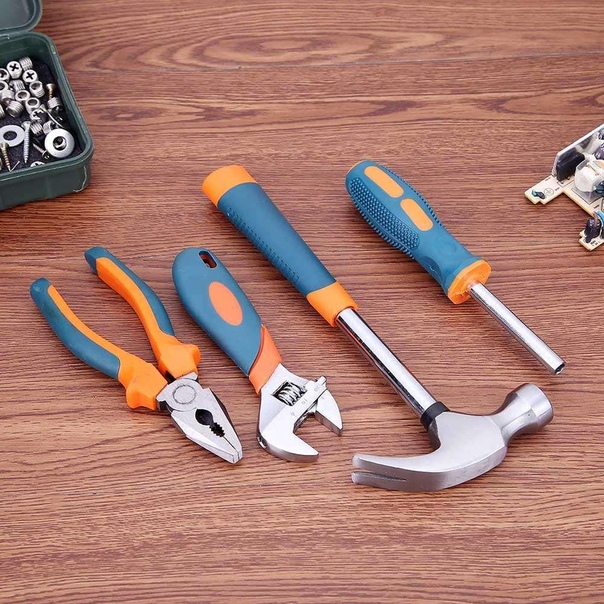
This is a general list of tools that will allow you to use any of the following methods.
Method # 1
Opening the door with a needle or female hairpin. Algorithm of actions:
- The outer side of the lock cylinder is cleaned with a brush to eliminate the obstacle in the form of small particles. If you are sure that there is metal shavings inside, a magnet is used to remove it;
- Next, you need to coat the mechanism with silicone or ordinary vegetable oil;
- Slide the tip of the selected item to find the bolt. The action is carried out as carefully as possible. If a person feels that he is hitting an obstacle, it is necessary to push to the right.

If a piece of the key is stuck in the keyhole, pliers will help to remove it.
Method # 2
When it became clear that it would not be possible to open the door with master keys, a more radical method was used - removing the core of the lock and its subsequent replacement. If the larva of the door lock has broken, then here is the instruction on how to open the door and replace the failed element:
- Conduct a thorough inspection;
- Unscrew the fasteners;
- Extract the larva;
- Lubricate the internal parts of the door;
- Install a new device.

The method is suitable in cases where there is access to the inner side of the metal sheet.
Method # 3
If you come across a lock with an English tongue, then the core will have to be drilled out, and the remaining elements removed with a screwdriver. To remove the larva, you need a piece of wire that will hook the device from the inside. Having hooked up the drive, it will be possible to push the crossbars. A simple hammer will help in knocking out the cylinder.

Method # 4
If the lock on the door is broken, and the person remains inside the room, a wedge will help. Better to use a heavy flat-tipped screwdriver or chisel. The opening device must be inserted into the gap between the box and the door leaf. The object is pressed in the direction opposite to the one into which the canvas opens. This technique can correct the skew of the box.

Method # 5
If the handle is jammed, then the problem lies in the tongue. Algorithm of actions:
- An iron ruler or a long knife is inserted into the gap;
- The object tilts slightly and slides along the steel cut;
- When you feel that the knife rested against the tongue, you should push yourself.
- If the closing device is without a cut, then it is necessary to press obliquely from above.

What to do with interior doors
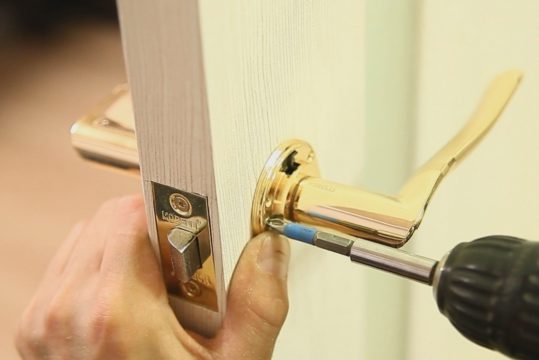
Interior doors also often fail. They can be opened with the tab. You will need a handy tool with a wide working part. A knife with a strong handle and a wide blade is suitable for work. With the help of a knife, the tongue is pry off, which contributes to the instant opening of the door.
In the absence of a tongue, the screws of the lock are unscrewed with a screwdriver and the secret mechanism is taken out. If there is no screwdriver, the screws can be unscrewed with an ordinary manicure file.
If the latch is triggered at the wrong moment, a thin wire is placed in the keyhole. This facilitates the actuation of the key and the release of the latch.
There are other methods that are used depending on the type of locks and the specifics of the entrance doors:
- a crowbar is inserted into the gap between the door leaf and the frame. Mechanical action sets in motion the crossbars of the lock, and the door can be opened;
- in critical situations, door hinges are cut using an impeller or grinder;
- when slamming the interior door, use a plastic card. This helps with the presence of a latch. The card is inserted into the doorway. If the design of the lock is complex, you will have to unscrew all the bolts.
On a note!
The door latch can be pressed with the help of tools at hand (knitting needles, pens or pencils).
Recommendations
In order for the lock on the door to work for a long time and properly, it should be looked after (lubricated). This must be done without fail when:
- Extra sounds appeared in the lock mechanism - rattling, creaking, other sounds.
- When inserting and turning the key, a slight jam occurs (as if something is catching, interfering).
- The key in the keyhole is difficult to turn.
- If the front door to the house is on the street, you need to hang a special overlay on the keyhole, which will protect the mechanism from dust and dirt.
Lock picking scheme with master keys
When the lock is jammed, as well as in the event of problems with the removal of the key from the keyhole, it is not necessary to use brute physical force. The key can break and remain inside, using force you can deform the lock mechanism, and then it certainly will not open. If all the careful actions did not give positive results, then it is best to turn to a knowledgeable person who will quickly correct the current situation.
Locking mechanism breakage
In this case, you can get into the apartment only if you have special skills. The only method available is to drill out the mechanism. If you can get the right tool and if you have the appropriate skills, you need to remove the decorative strip and drill out the larva.
At the same time, the door suffers a little, but the locking mechanism will need to be changed.
In some cases, you can knock out the cylinder with a hammer, and then use a metal hook to move the crossbars. However, this is only possible with some models. If the lever lock is jammed, for example, it is better not to try to open it yourself.
Reasons for jamming
There can be many reasons for jamming the locking mechanism, among the most common are:
- getting into the keyhole of foreign objects;
- contamination of the castle with dust and small debris;
- attempts to unlock the door in the wrong way;
- swelling of the wood sheet;
- skew;
- defects in the production process;
- blocking the tip;
- using a duplicate key made with defects.
Attempts to open it manipulatively
In the case when extraneous manipulations are made with the door, which are not provided by the manufacturer, the lock may jam or break. Try to handle the door leaves carefully, without subjecting them to unusual loads. This will extend their service life, and you will not have to waste time opening the locks.
Intrusion of foreign objects into the well
The ingress of foreign objects into the keyhole is most often due to children's pranks. They do not realize that the lock is a fragile mechanism that can be easily damaged.
Borehole contamination with dust or mechanical shavings
The lock larva is so fragile that it is not necessary to insert foreign objects into it to cause problems. It is enough to clog the keyhole with dust and the lock will jam.In case of careless handling of keys made of low quality metal, microscopic shavings will enter the mechanism, which also interferes with the normal functioning of the door.
Inflating a wooden door leaf
If there is high humidity in the room, and the door is made of wood, the mechanism may malfunction due to deformation of the material. To avoid this, try to ventilate the area and prevent liquid from spilling onto the wooden surface.
Inappropriate use of the unlocking device
Keys are often used not only to open locks, but also for unauthorized manipulations, as auxiliary tools. This disturbs their shape, which negatively affects the interaction with the locking mechanism.
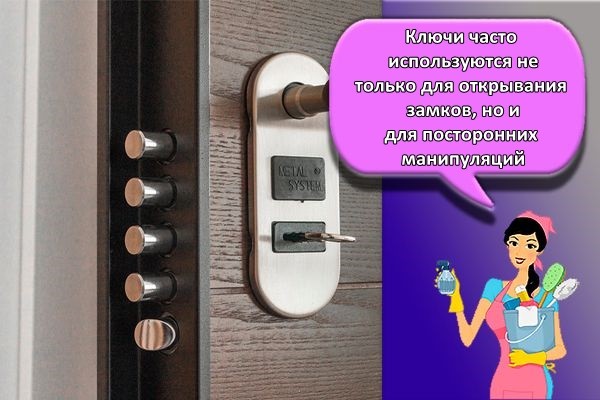
Chips and scratches remain on the metal surface, in which dirt collects. Upon contact with the keyhole, it remains inside, which speeds up the process of clogging.
Strong slamming of a metal or wooden door
When problems arise when opening doors, many do not try to find and eliminate the cause of their occurrence. Instead, they begin to slam the door, applying excess force to this. This approach negatively affects the integrity of the object and internal mechanisms, accelerating their destruction.
Skewed door leaf
Unfortunately, not all manufacturers approach their business with due responsibility and attention. Some hastily designed door designs cannot support their own weight and deform after installation.
This becomes the reason for jamming the locking mechanism, which does not allow the rightful owners to get inside the apartment.
Using a low quality duplicate key
When using duplicate keys made of low-quality materials, it is possible:
- clogging of the keyhole with metal shavings;
- the key, when opened, can break, getting stuck inside the larva;
- damage to the internals of the mechanism due to incomplete correspondence of the key to the original.
Pin falling out of the mechanism and blocking the tip
Pins - pins in the lock mechanism, ensuring its reliability and safety. The pins themselves are quite fragile and, if you do not follow the rules for operating the mechanism, they will begin to collapse faster. This will lead to jamming or breakage of the lock, which will complicate penetration into the room.

Manufacturing defects
There are cases when a person is simply unlucky, and he buys a defective product. No matter how well you treat it, damage cannot be avoided. This situation cannot be influenced in any way, and all that remains is to rely on luck. The only thing that can reduce the risks is to check the product before purchasing.

